The Winged Victory of Samothrace is a marble sculpture that has been a symbol of triumph, beauty, and grace for over 2,000 years.
This masterpiece, also known as the Nike of Samothrace, depicts the Greek goddess Nike, who was the personification of victory.
The statue is considered to be one of the most significant works of art from the Hellenistic period, and it has inspired countless artists and art enthusiasts throughout history.
Here are 10 interesting facts about the Winged Victory of Samothrace that will help you appreciate this fascinating sculpture at the Louvre even more.

1. The statue was discovered in 1863 by a French archaeologist
In the year 1863, a remarkable discovery unfolded on the remote island of Samothrace, off the coast of Greece. It was a moment that would forever change the world of art and archaeology.
As French archaeologist Charles Champoiseau (1830–1909) embarked on an excavation mission, little did he know that he was about to unearth a true marvel of antiquity, a sculpture known today as the Winged Victory of Samothrace.
Imagine the scene as Champoiseau delicately brushed away layers of earth, revealing fragments of an ancient sculpture hidden beneath. Piece by piece, the ethereal form of Nike, the goddess of victory, emerged, her wings outstretched in a triumphant pose.
The sense of anticipation and awe must have been palpable as the true magnitude of the discovery became apparent.
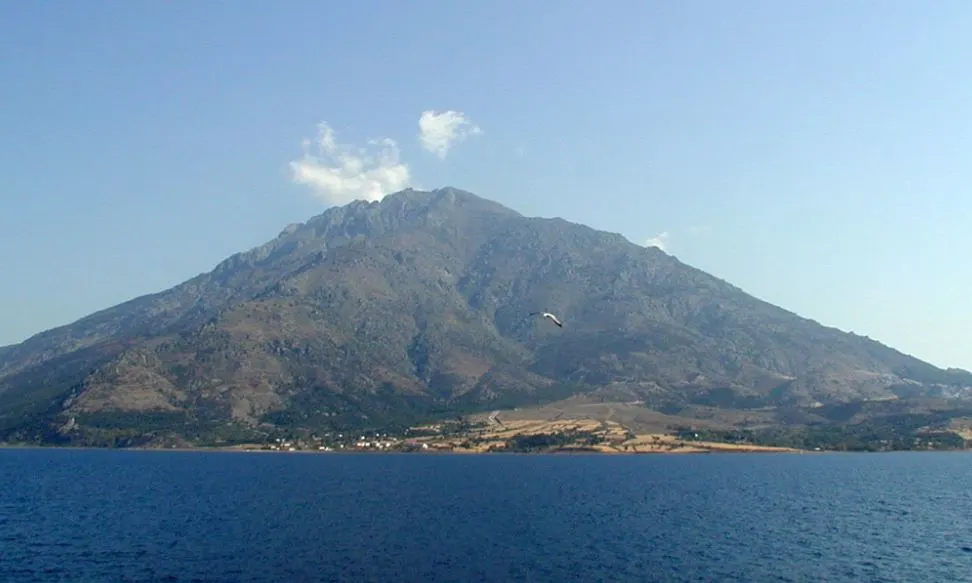
2. It’s believed to have been created in the 2nd century B.C.
The island of Samothrace, a remote and windswept outpost in the northeastern part of the Aegean Sea, seemed an unlikely place for such a treasure to be concealed.

Yet, precisely this isolation preserved the statue’s magnificence for over two millennia in an area known today as the Samothrace temple complex.
In the mystical realm of ancient Greece, at a time when gods and goddesses danced among mortals, a masterful sculptor chiseled away at a block of pristine marble.
The year was approximately 190 B.C., and although there’s no exact date as to when it was completed, this date is generally agreed upon by art historians.

3. Some scholars have suggested that they know the actual sculptor
The name of this extraordinary artist remains lost to time, forever hidden behind the veils of anonymity. This obviously doesn’t mean that three haven’t been names suggested as potential candidates.
Some scholars claim that it was the famous Greek artist Pythokritos, a sculptor from Rhodes who was active between 210 and 165 B.C.
This theory is made strong because the Parian marble from which the sculpture was carved was quarried in Lartos in Rhodes.
Regardless of the exact name of the sculptor, it’s agreed that the man was part of the Rhodian sculpture school as the Winged Victory embodies its style.
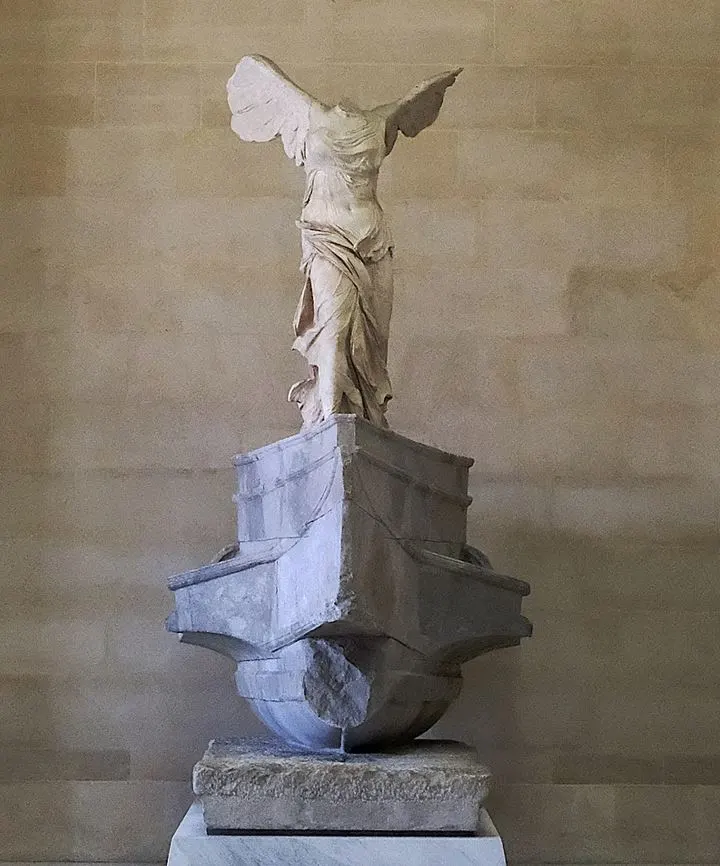
4. The Winged Victory of Samothrace is an imposing sculpture
Standing at an impressive height of 5.57 meters (18.24 feet), the Winged Victory of Samothrace casts a commanding figure, capturing the essence of strength and triumph.
This height includes the pedestal. The sculpture itself stands 244 centimeters (96 inches) tall and would have been a bit taller with its head.
But what truly adds to the sculpture’s allure is the fact that it consists of several marble blocks skillfully joined together.
About 1.5 times life-sized, the sculpture itself consists of 6 marble blocks that perfectly fit together. The pedestal, which resembles the prow of a ship, consists of 16 blocks.

5. It depicts Nike, the Greek goddess of victory
The depiction of the Greek goddess Nike, also known as Victory, in the Winged Victory of Samothrace, holds profound symbolism and significance.
Nike was an integral part of ancient Greek culture, representing the concept of victory in both warfare and competition.
Because of this, it has been suggested that the sculpture was commissioned in honor of a major battle between the Rhodians and their adversaries.
Which battle remains unknown and many suggestions have been made. This includes the battles of Myonnesus and Magnesia and the Battle of Lade in 201 B.C.
Some scholars have suggested later battles, including the victory of the Romans at Pydna in 168 B.C. over Perseus.
Regardless of which battle it was, it was a naval battle because the Winged Victory of Samothrace was placed on the prow of a ship.

6. It was damaged during its excavation but was completely restored in 2014
The sculpture was brought down from its pedestal in 2014 and completely restored. It underwent UV, infrared, x-rays, micro spectrography, and a complete marble analysis.
For this delicate procedure, each block was carefully removed and researched, a remarkable endeavor indeed.
The restoration process was a meticulous dance between science and artistry. Each fragment was delicately examined, meticulously cleaned, and precisely reassembled, like a grand puzzle coming together.
The conservators scrutinized every minute detail, striving to resurrect the original intentions of the sculptor, to recapture the fleeting beauty of Nike’s triumphant stance.
Apart from using this data to restore and preserve this ancient masterpiece, the team also discovered traces of blue pigment on the wings and the bottom part of the sculpture.
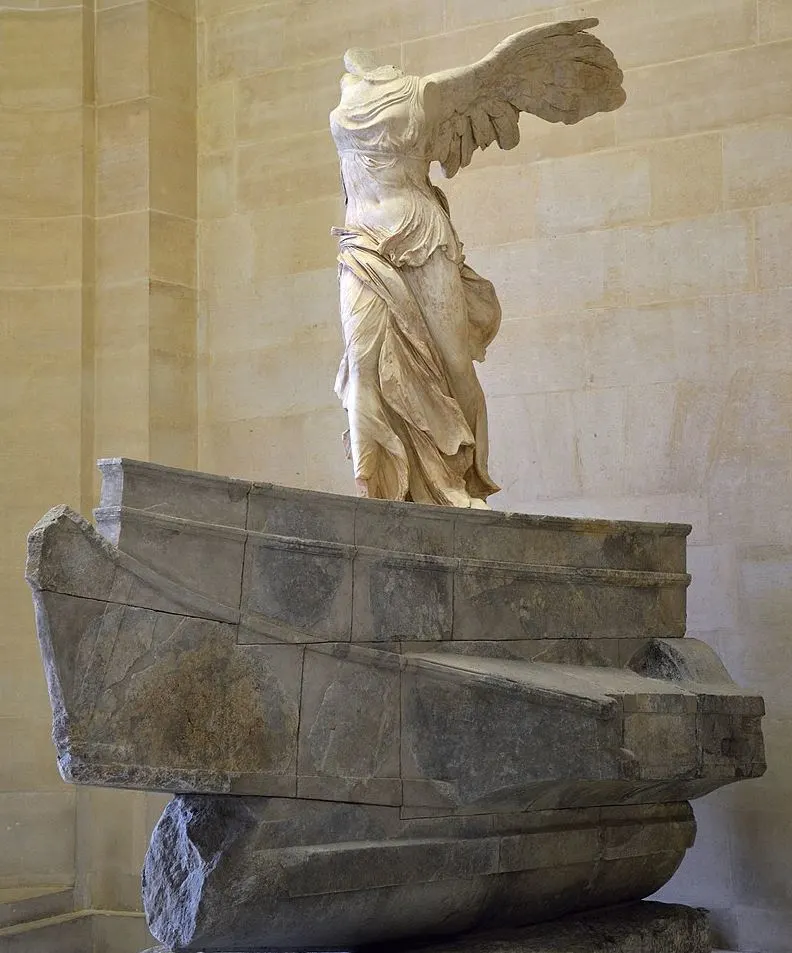
7. The statue has been housed in the Louvre Museum in Paris since 1884.
The journey of the Winged Victory of Samothrace from its original resting place on the remote island of Samothrace to the grand halls of the Louvre Museum is a captivating tale in itself.
Recognizing the exceptional beauty and historical importance of the Winged Victory, Charles Champoiseau, the man who discovered it in the 1860s, ensured its preservation by acquiring the rights to the sculpture and transporting it to France.
The arduous task of transporting the massive marble fragments across the treacherous seas commenced and the sculpture was finally unveiled at the Louvre in 1884.
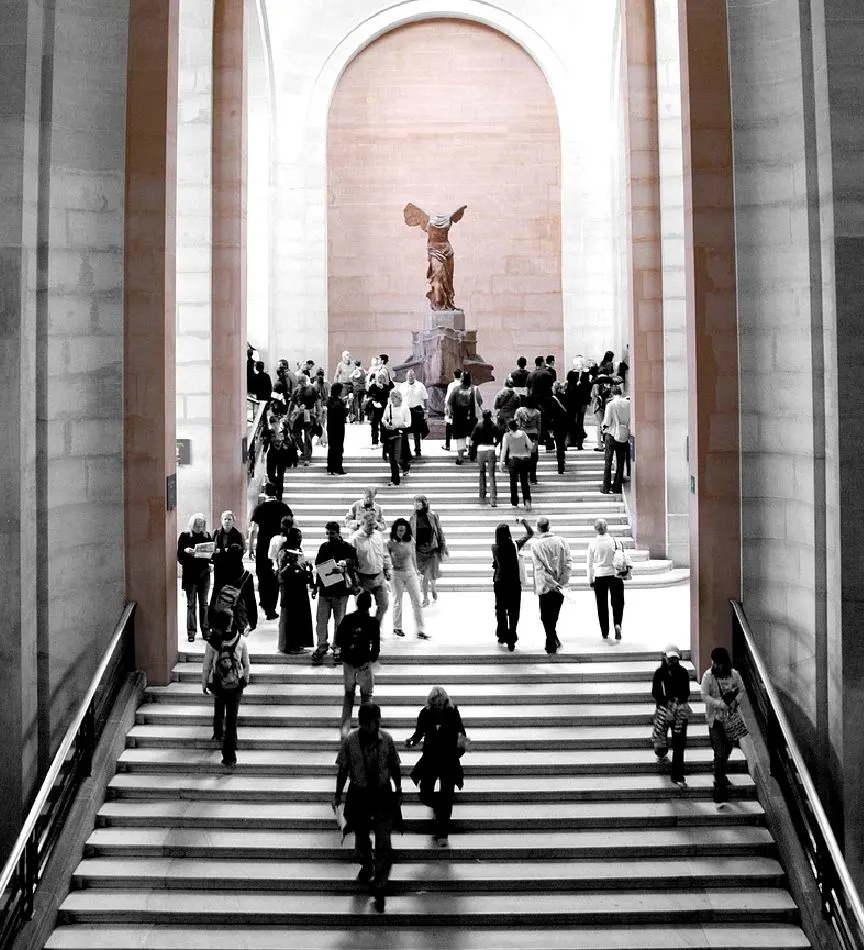
8. We kind of know how Nike’s head looked like in ancient times
You probably wonder why I didn’t talk about the missing head of the sculpture, right?
Well, every hint at how the head looked is merely speculation. The only fragment we have about its appearance is a similar-looking sculpture on a coin minted in the 3rd century B.C. known as the Tetradrachm of Demetrios Poliorcetes (293–292 BC).
The goddess Nike on the prow of a ship decorates one side while the other depicts the mighty Poseidon.
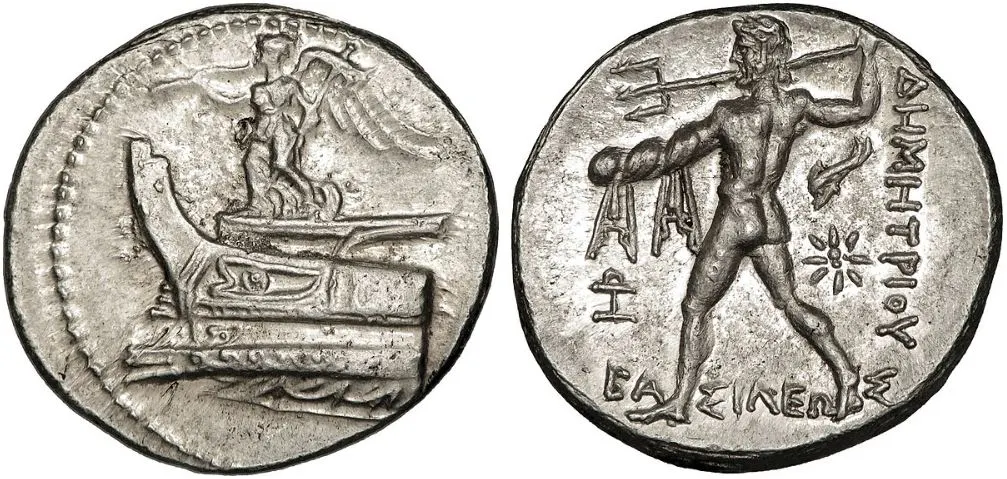
If you want to imagine Nike’s head, then perhaps you can look at the Venus de Milo, another world-famous sculpture that was probably carved in the same century.
What’s even better is that you can admire this sculpture at the Louvre in Paris as well!

